Magic: the Gathering has been around a long time now. As a result, there is a healthy supply of “X is just a colorshifted version of Y” cards as you make your way through different discussions or hypothetical deck ideas. Sometimes it’s a literal colorshift like Planar Chaos had en masse; or it’s something more subtle, like when Godo, Bandit Warlord was described as “Stoneforge Mystic, but it can be your general” on an old-school episode of Commander Cast.
Today is one of those days where random searching allowed me to stumble upon my vision of the “Black Invisible Stalker.” This week we’re going to explore Cao Ren, Wei Commander.
Cao Ren, Wei Commander
Calling Cao Ren an Invisible Stalker variant is a little sensational, as there is no hexproof and any of the creatures with Horsemanship from Portal: Three Kingdoms could have that acclaim. But while Xiahou Dun, the One-Eyed, Lu Meng, Wu General, or Lu Xun, Scholar General could fill a similar role, I feel Cao Ren is built more aggressively than Lu Meng or Xiahou Dun —the latter being more of a Reanimator deck—and inspires more creatively than Lu Xun.
We want to pack our deck with “saboteur” effects—combat damage triggers—so we can reasonably assume they will trigger every turn. My goal for this deck is to be a mono-black Voltron deck that isn’t winning through Infect damage like Skithiryx, the Blight Dragon, but that also has something to do if our game plan goes awry and we need to make winning a long term goal. I want to leverage the fact that our general should not be seeing any interaction during combat. At the end of the day, maybe this is a really a “your general is Tormented Soul” deck, but did you even remember that card existed?
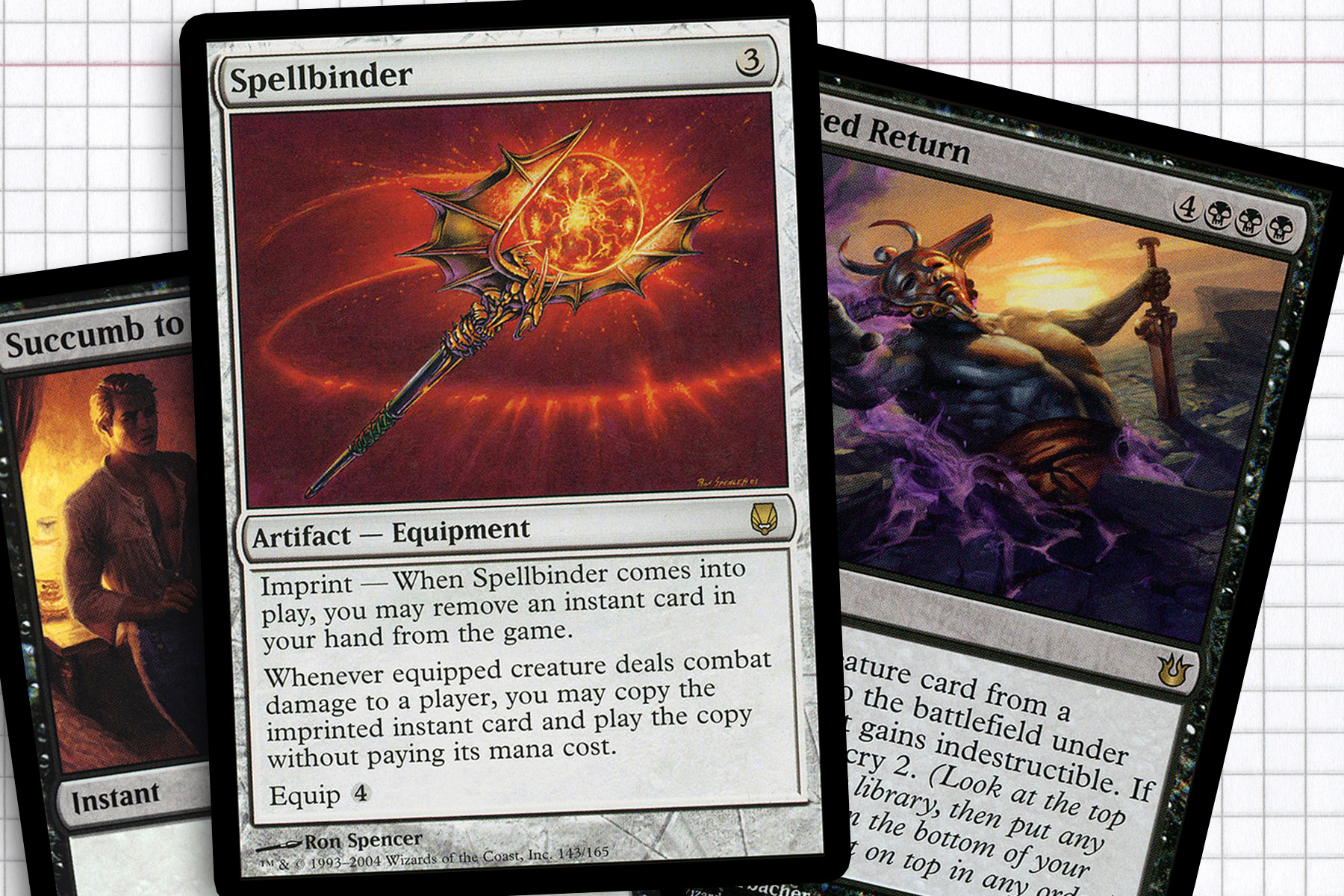
Spellbinder
Commander players look at Isochron Scepter packages as being a collection of cards in the deck that you are happy to play without the Scepter, but combining them with it gives them unbelievable value. Spellbinder is similar, and seems very much at home in this deck. Whereas I used to structure these articles heavily on highlighting one specific card at a time, I have found that narratively things generally flow better talking about larger concepts and suites of cards. But Spellbinder was the eureka moment for me and requires its own section dealing with how we want to build around it.
The saboteur trigger creates a narrower subset of cards that will be good with Spellbinder. Instants that give evasion, buff our creatures, or remove blockers are going to be impractical. So while Rend Soul or Walk the Plank certainly have their roles to play, I would rather have Hero’s Downfall or Vraska’s Contempt to allow me the option to pressure my opponents while also removing planeswalkers. To me, some of the best cards that could be played normally, but improve while imprinted, are Grip of Desolation, Fated Return, Wretched Confluence, and Succumb to Temptation. All four will be two-for-ones or better in most cases, and their repeated effects should bring you to a commanding position.
Echoing Decay and Consume the Meek are handy in a metagame with tokens decks. Annihilate, Scour from Existence, and To the Slaughter help fight other Voltron decks. And Rapid Decay or Scarab Feast are underwhelming effects on the surface that when repeated can help keep graveyard-dependent decks in check, especially since they will be cast after a problematic creature has died.
Lastly, while not part of the actual package, we will want access to double strike if we can get it. By slotting in Fireshrieker and Grappling Hook, we should be able to land multiple triggers off Spellbinder every attack step.
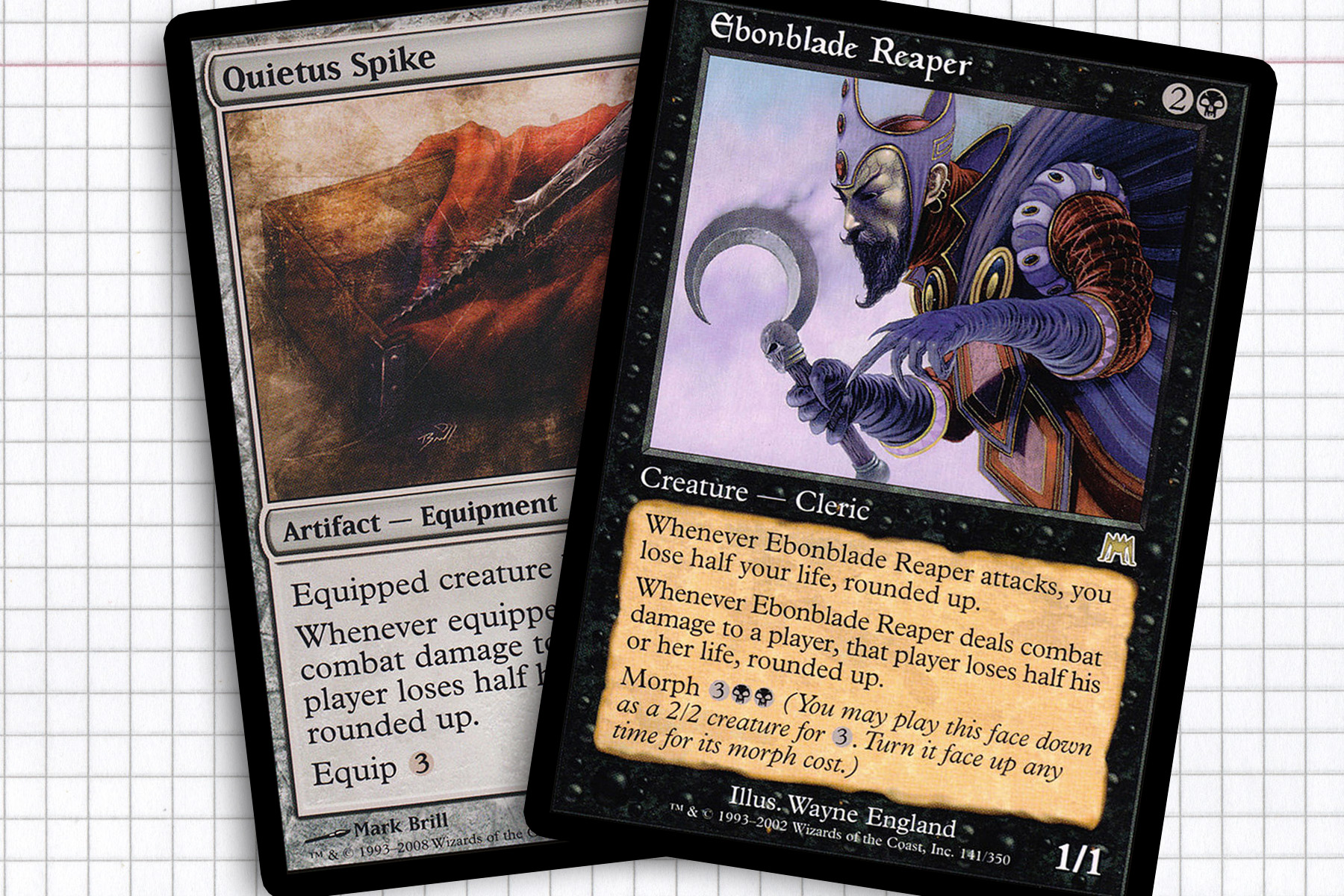
The Half Life Three
The comparison between commander damage and Infect is not that different in many respects. Both are damage that you alone are contributing to and can’t be reasonably interacted with in current Magic rules. In spite of this, I would rather we interact with life totals in a way befitting our general. Since we’re not afraid of missing our opponents when we swing at them, Cao Ren can make good use out of Scytheclaw and Quietus Spike, while Ebonblade Reaper can be an additional surprise copy of these triggers.
While I am all for winning through commander damage, these effects will be contributing better to the overall pace of the game since we’re interacting with life totals on a global axis. Because we only have access to these three cards, I recommend one of my old school favorite cards, Planar Portal, as a nice way to fetch one of these up and gain some originality points.
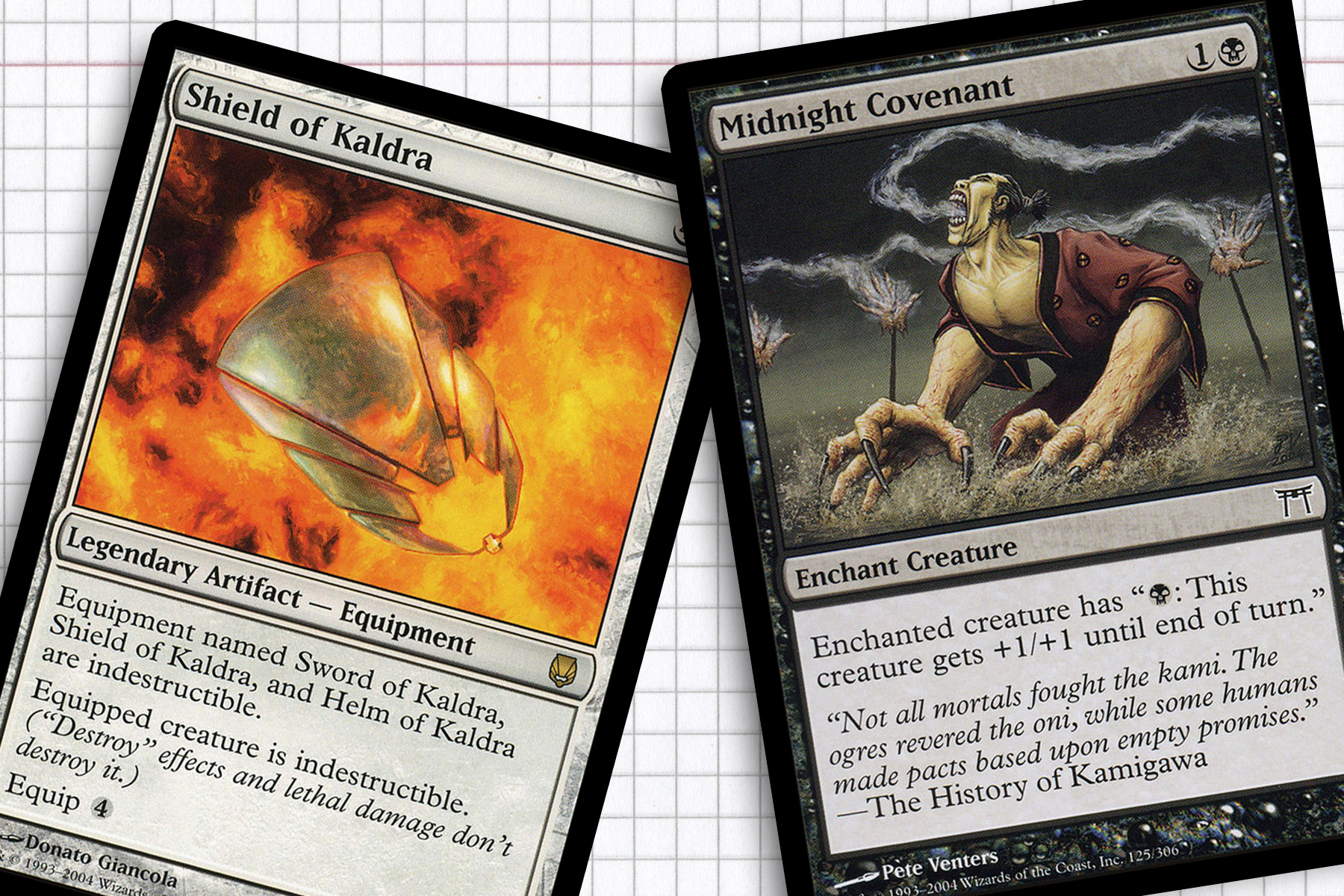
General Beatdown
As we continue to play into the unique qualities of our general, I was looking to find a few lesser-known gems that will work well with Cao Ren. First off are equipment that care about when you give the smackdown to your opponents—Worldslayer in combination with Darksteel Plate, Shield of Kaldra, or the new Hammer of Nazahn can be used to put the table back to Stage One of development, leaving you in prime position. This will likely just result in you winning the game on the spot and shuffling up, but maybe there is that one person playing an Amonkhet God who will still want to go toe-to-toe.
Beyond the pseudo-Decree of Annihilation play, equipment like Rogue’s Gloves, Mask of Memory, and Prying Blade will accrue value for you in the form of card draw or extra mana. Elbrus, the Binding Blade is all but guaranteed to transform into a demon and cut down the clock to victory. Bloodforged Battle-Axe can arm our entire team or just our general repeatedly. Inquisitor’s Flail loses a lot of its downside when blockers are taken out of the equation. And finally, Lashwrithe and Nightmare Lash are the Not Secret Tech of the Week.
The last piece of my beatdown suite would be a few utility auras to act as role players. Endless Scream and Midnight Covenant can both be late-game plays that make Cao Ren a one-turn clock. Eldrazi Conscription is a big dumb enchantment that does big dumb things, and Blessing of Leeches or Soul Channeling can keep our general around at little cost.
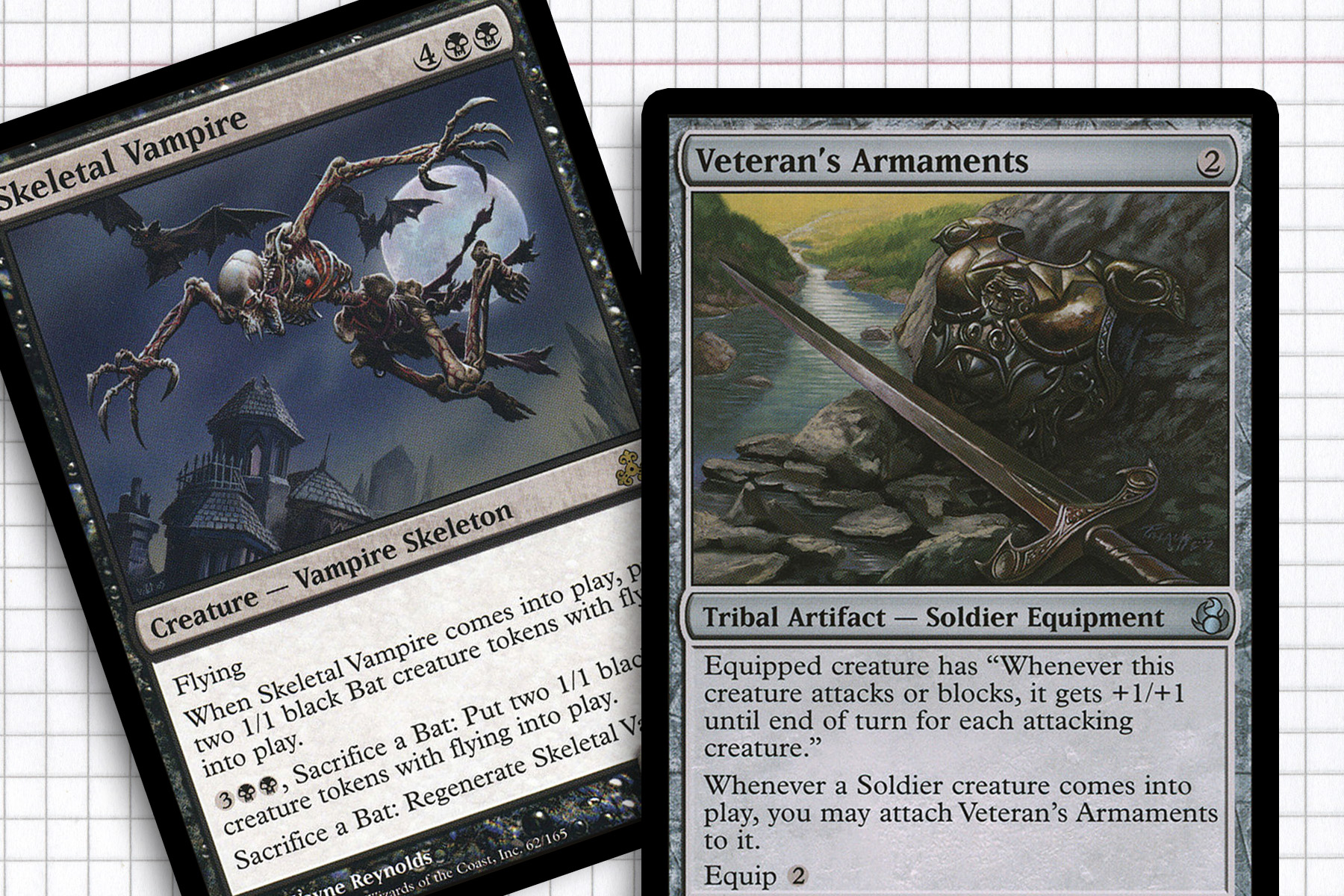
Destruction of Property
When we’re not swinging with our general, it is entirely possible that we will want to leverage other permanents to ruin our opponent’ choices. Right off the bat, having Larceny on the battlefield is a good follow-up play to casting our general and improves every creature we have in play. In terms of “saboteurs,” I would recommend Necropolis Regent or Drana, Liberator of Malakir for their abilities to improve our board and Fell Shepherd or Steel Hellkite, which can act as removal. Besides our general, everything else becomes expendable, so fueling Fell Shepherd with token generators like Skeletal Vampire, Pawn of Ulamog, Dread Drone, or Ghoulcaller Gisa seems like a strong game plan that will give us more to do over a long game.
And finally, while the printed card does not have all of Cao Ren’s creature types, he is a Legendary Human Soldier Warrior. This combination of creature types means he will benefit from Veteran’s Armaments, Obsidian Battle-Axe, Hero’s Blade, and reap the rewards from Raider’s Spoils. It is a shame more of Tarkir’s warriors-matter theme ultimately fell more into Black/White.
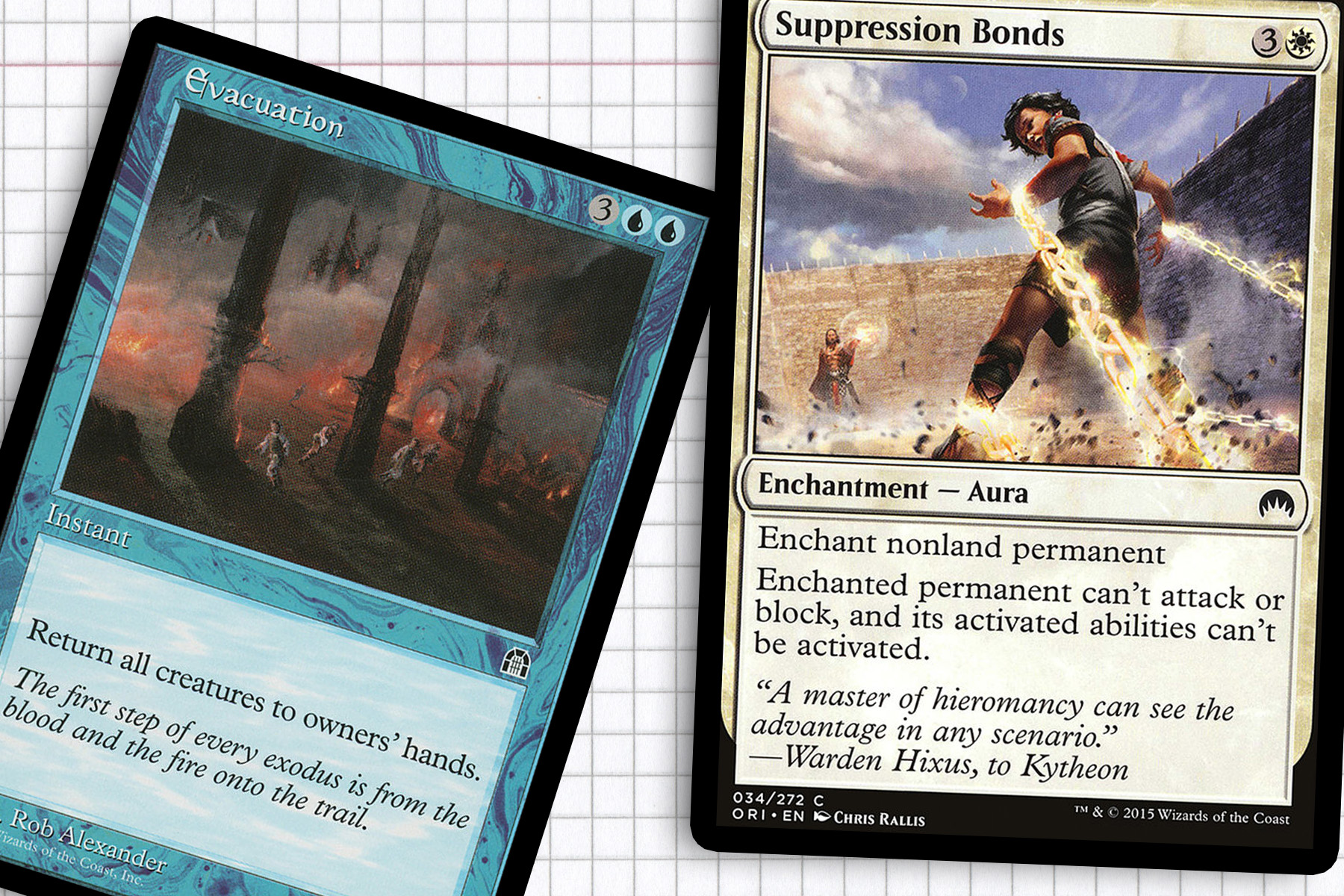
Going Horribly Awry
Beyond the requirement that you may need to leave your consciousness at the door when you play this deck, what are some of its weaknesses? A few could be metagame-dependent and should at least be kept in mind. For example, our general costs four mana and doesn’t do anything other than lower your life total as it enters play. In some playgroups four mana is when the first sweep of the board occurs. I don’t honestly believe that games will be decided by turn four or that delaying your general will really cost you a lot in the long term; but in a world of Kess, Dissident Mage and Brago, King Eternal, four mana can do a lot more than “attack good.”
As with all mono colored decks and especially with Black, there are going to be situations that we can’t answer. We will be weak to troublesome enchantments and artifacts, only having Scour from Existence, Ugin, the Spirit Dragon, and Spine of Ish Sah to reliably answer them. We’re also an aggressive deck trying to win through damage; and while we have a leg up, we cannot always guarantee that we will get adequate disruption from our saboteur effects.
Overall, I think looking back at an older general like this is a great exercise in expanding our evaluation skills and opening up to new ideas. Maybe there is a better fit for the deck I have outlined or maybe there is a hidden gem I couldn’t stumble up on in my research that really brings this deck alive.
With that, I finally I turn the attention back to anyone who wishes to be vocal and give their own two cents. What would you do with Horsemanship? Would you build this deck? What would you include? You can find me on Twitter and check out my daily EDH Weapon of Choice post. Until next time, good luck and thank you!

